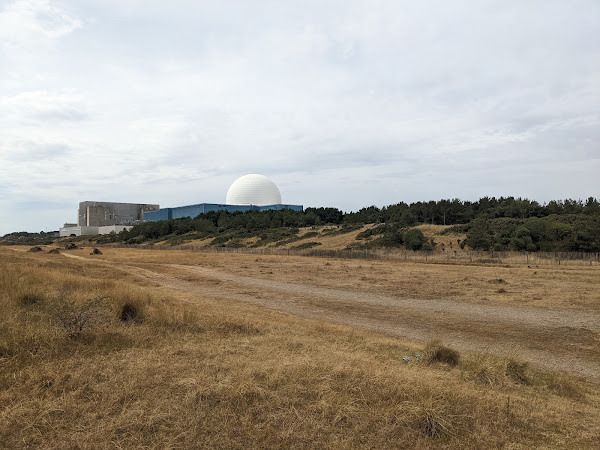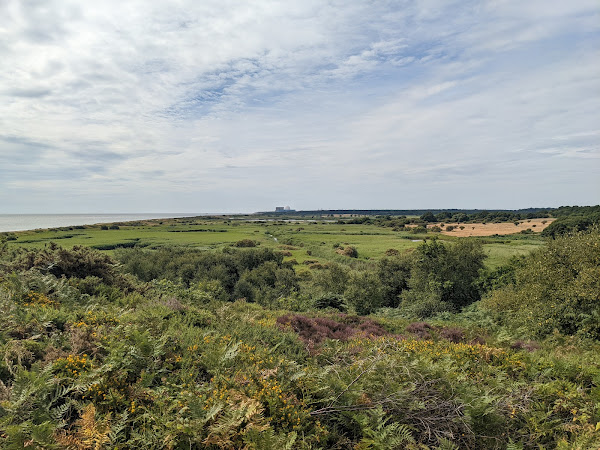I wanted to continue to take advantage of the pleasant weather this week, by attending another seafront-based parkruns, and Sizewell parkrun was one of the few remaining events in the East of England that fulfil that criteria that I hadn't attended yet, and so my decision was made!
The area
Perhaps best known for its nuclear power station, Sizewell is a small hamlet on the coast of the North Sea. The hamlet's origins lie in the fishing industry, although neighbouring towns and villages have since transitioned into tourist hotspots, leaving Sizewell (and Sizewell beach) to remain a quiet and relaxed area.
The course
The event is run on mostly grassy sanddune paths, and the route is a flattened lollipop. The surface is a mixture of sand, grass, and gravel, and undulates throughout, while the sandy sections add an extra element into the mix too!
Toilets are available at the paid car park, which is also next to a tea room, and which offers refreshments after the run!
The run
I was pleasantly suprised to see a good number of people attending Sizewell this week; the Recent Events page had suggested an average of around 80 runners per event until recently, and there were clearly more than that at the start area! From the run director's briefing, it was clear that a sizable portion of the field were tourists like me, as almost every hand went up when asked if there were any tourists this week!
After a quick description of the course, we were under way, and I found myself remembering the challenges of running in the soft sand at Great Yarmouth North Beach parkrun a few weeks ago, as the paths would alternate between harder, more runable surfaces, to soft sand which sapped speed and energy. I countered the changable footing by looking for the more solid ground to step on, but this ultimately meant I couldn't enjoy the scenary as much as usual during the event (I retraced the route later).
Thank you to all of the event team for a great run! Having run at Mildenhall Hub parkrun last week, which was a new event, and therefore had many extra marshalls, it was a big change to know that there were only 9 volunteers this week!
After the run
One of the impacts of the Sizewell C nuclear power station being approved on 20th July 2022 is the potential impact to the local nature reserves, most specifically the RSPB's Minsmere. The physical impacts are likely going to be minimal due to the new construction expected to be adjacent to the existing site, but this was reason enough for me to explore the reserve anyway.
The ruins of Leiston old abbey still stand and are visible from the nearby public footpath. Unlike many other abbeys which were destroyed as part of the dissolution of the monestaries, Leiston Abbey was abandoned in 1363 because it suffered from so much flooding owingt to its location on marsh land.
After reaching the abbey, I followed The Eel's Foot Minsmere and Dunwich Walk route around the nature reserve, starting from the Sluice / East hide, heading north along the sanddunes.
Part of the Minsmere nature reserve, The Scrape, was artificially created to encourage more wading birds to nest in the area, including Avocets; the RSPB's logo features an avocet, but is also home to a wide range of other wildlife.




